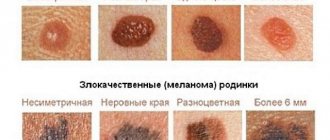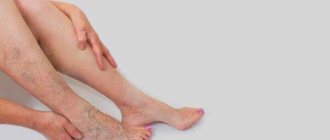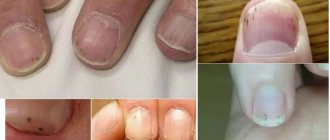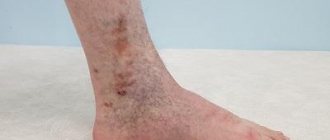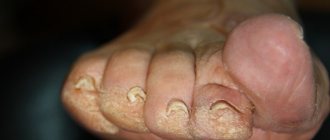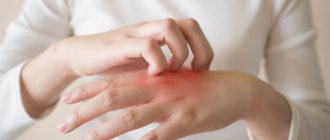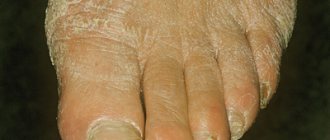Weeping eczema
Systemic therapy
Therapy for weeping eczema is selected individually, taking into account the presumed causes of the disease, the severity of clinical manifestations, and the presence of concomitant pathologies or complications in the patient.
To reduce sensitization of the body, patients are recommended to follow a hypoallergenic diet, from which fatty fish and meats, oysters and other seafood, coffee and cocoa products, citrus fruits, tomatoes, and legumes are excluded. If the exacerbation of the disease is associated with the influence of exogenous factors, their elimination is a necessary condition for the success of treatment. Given the specific situation, patients may need to change their place of work, eliminate household allergens, or move to more suitable climatic conditions. Complex treatment of weeping allergic dermatosis requires the use of a number of drugs:
- Antihistamines
. To eliminate skin itching in the acute phase, first-generation histamine blockers are used, and after relief of symptoms, it is possible to continue treatment with second- and third-generation medications. - Desensitizing drugs
. Solutions of calcium and sodium thiosulfate are used. The treatment reduces vascular permeability, has an anti-inflammatory effect, and normalizes metabolic reactions in the dermis. - Cell membrane stabilizers
. To enhance the effectiveness of antihistamines, treatment with mast cell membrane stabilizers is indicated. Some authors recommend the use of omena-3 polyunsaturated fatty acids to normalize the structure of cell membranes. - Glucocorticosteroids
. For generalized forms of weeping eczema and no effect from other treatment options, hormones are used in pulse therapy or long-term use. - Immunocorrective agents
. Rational immunocorrection is prescribed to alleviate the condition of a continuously recurring form of weeping eczema. Treatment includes thymus preparations and leukopoiesis stimulants. - Antibiotics
. Treatment with antibacterial agents is required for the microbial form of dermatosis and the proven infectious-allergic nature of the disease.
Since various somatic disorders play a role in the pathogenesis of weeping eczema, treatment includes the correction of these pathologies. To normalize the functioning of the digestive tract, it is advisable to use enzyme replacement therapy, probiotics and synbiotics, and vitamin and mineral complexes. To balance the state of the central nervous system, mild sedatives are included in the treatment regimen; tranquilizers and antidepressants are prescribed for certain indications.
Local therapy
In the weeping phase, lotions with astringents are used, which reduce exudation, promote faster appearance of crusts and regression of the disease. In the acute stage, daily procedures lasting 1-1.5 hours are prescribed, which involve constant changing of the dressings as they dry. Then they proceed to applying ointments with topical corticosteroids, antiseptics, and calcineurin inhibitors.
Of the physiotherapeutic methods of treatment, the most effective is selective ultraviolet therapy, during which irradiation is carried out with light of a narrow range (311 nm). Low-intensity laser irradiation of the red or infrared spectrum, electropuncture of biologically active points, and local hyperthermia are also performed. At the stage of remission, ozone therapy, balneotherapy, and peloid therapy have a good effect.
Trophic ulcer - symptoms and treatment
The first symptoms of a trophic ulcer include bluish skin, itching and burning, which intensify over time. The disease is also characterized by soft tissue swelling, which increases in the evening. These changes occur against the background of varicose veins, so heaviness in the legs, night cramps, enlargement and expansion of reticular veins may occur.
Symptoms of trophic ulcers of the lower extremities may vary depending on the cause of the disease [7].
Venous trophic ulcers are accompanied by swelling of the lower extremities (usually the legs), discoloration and thickening of the skin on them, the appearance of itching, and the presence of varicose veins. Most often, ulcers in chronic venous insufficiency are localized on the inside of the leg, just above the ankle [1].
Arterial ulcers most often form on the foot (toes, interdigital spaces, on the dorsum, heel) and much less often on the legs. They are accompanied by severe ischemia (impaired blood supply, rapid fatigue of the legs, in some cases, ischemia causes discomfort when walking). Often such ulcers occur after minor injuries: bruises, abrasions, cuts and are accompanied by significant pain. The symptoms are quite specific: chilliness and coldness of the feet, gradually progressive pain in the legs during physical activity (intermittent claudication), and in advanced cases - at rest [5][7].
Trophic ulcer in diabetes mellitus is a consequence of diabetic microangiopathy (damage to small vessels) and neuropathy (damage to arterioles and nerves). A feature of ulcers associated with diabetic foot syndrome is the absence of pain due to the death of nerve endings . Such ulcers are deeper and more extensive than when large arteries are affected, and most often form in the area of the big toes, often at the site of corns.
The three above causes occur in 90% of all trophic ulcers [2].
Martorella's ulcer , sometimes accompanying a severe form of arterial hypertension, is usually symmetrical and is often located on both legs on the outer surface. At the site of the future ulcer, reddish, slightly painful spots appear, then they slowly ulcerate, cause severe pain and often become infected [7][8].
Neurotrophic ulcers often complicate the course of spinal injury, damage to large nerve trunks and various polyneuropathies (multiple lesions of peripheral nerves). They are usually localized in the heel area and are often painless due to impaired sensitivity. They have great depth, reaching muscles, tendons and even bones [7][8].
Ulcerative lesions in lymphedema occur at the stage of elephantiasis - a sharp increase in the volume of the lower limb in the process of progression of lymphatic edema. However, lymphedema can also be of a secondary nature, developing after the formed trophic ulcers [1].
Infectious ulcers can appear at the sites of boils, carbuncles, and purulent eczema. They can be single or multiple, round in shape and shallow in depth, and can secrete pus [4].
What to expect from treatment?
With proper care, the surface of the ulcer closes after 1.5 months. The use of vacuum therapy speeds up healing:
- Optimizes blood flow,
- Reduces swelling of local tissues,
- Removes excess fluid that can slow down cell growth,
- Reduces the number of bacteria.
- In addition, negative pressure changes the structure of cells in the wound layer, causing a cascade of intracellular signals that increase the rate of cell division and formation of granulation tissue.
There are a number of contraindications for vacuum therapy:
- malignant wounds;
- osteomyelitis without adequate treatment;
- necrosis with crust formation.
In such cases, cleansing is carried out using enzyme preparations and active surgical dressings. It is important to understand that cleansing trophic ulcers is an auxiliary method of treatment and in itself cannot lead to healing of the ulcer without eliminating the causes of its appearance.
Phases of the wound process
- Purification stage
If there is copious purulent discharge or the presence of necrosis or an unpleasant odor, the ulcer must be cleansed of infection and dead tissue. This is achieved by washing the ulcer with a sponge soaped with laundry soap. To separate dead tissue, chymotrypsin powder or mesh with enzymes (parapran) is used, which is placed into the ulcer after washing and covered with a napkin. Dressings are repeated 2 times a day before bedtime and after waking up. Before each dressing, the ulcer is washed with a soft sponge and laundry soap. In the morning, a compression stocking or golf stocking of 2-3 compression class is put on over the bandage; in extreme cases, a fresh elastic bandage is used. If the skin around the ulcer is eczematous, then it is necessary to reduce inflammation; if there is redness of the skin around the ulcer, hormonal ointments (Lorinden, fluorocort) are used, which are applied in a thin layer under a dry cloth at night and not rubbed in. Hormonal ointments are used for no more than 5 days.
- Healing stage (granulation)
When good granulations appear - the ulcer is bright red, relatively clean, and its depth is reduced, treatment is required to stimulate healing and protect the granulations from damage. We use special wax mesh (voskopran) on top of which we apply ointments that promote healing - olasol, curiosin, gel dressings. The compression rules remain the same. You can wash the ulcer at this time without a sponge and carefully. Dressings once a day. Improving blood flow is achieved by elevating the leg during sleep (15-20 degrees), and mandatory compression with a stocking or bandage while awake. Elastic compression is necessarily used for venous ulcers; for arterial ulcers it is contraindicated, since on the contrary it can cause harm.
- Epithelization stage (final covering with new skin)
After the ulcer begins to heal, only light protective coverings like the same mesh are used, and gel dressings such as “hydrocol” can be used. If a small dry crust forms, there is no need to remove it specifically. After the appearance of young skin, it will fall off by itself. For venous ulcers, after eliminating venous congestion (sclerotherapy, laser or surgery), the ulcerative surface closes in 2-6 weeks. For arterial ulcers, the situation depends on the degree of restoration of blood circulation. With good blood circulation, ulcers usually heal within 1-3 months.
Reviews of the treatment of trophic ulcers by Dr. Semenov A.Yu.
Thanks to fate that life encountered such a wonderful person and top-class specialist, phlebologist Artem Yuryevich Semenov.
I thought that no one would save my legs, damaged by varicose veins and beginning ulcers. Artem Yuryevich succeeded. A wonderful center, a wonderful team, the most advanced equipment, and most importantly, a sincere and caring attitude towards the patient. Thanks a lot. I'm with you. Mayorov Andrey, 09/02/2020 More details Andrey Mayorov, 09/02/2020
I express my deep gratitude to a wonderful person, a wonderful and highly professional doctor Artem Yuryevich Semenov!!! It so happened that I turned to him when my illness was advanced. I have already developed a trophic ulcer on my ankle, terribly enlarged veins, and swelling in my legs. At the clinic, I was received by kind and sympathetic people, professional, who knew how to calm me down and set me up that the operation would go very well! After the operation...Read more
Bazarova Galiya Damirovna, Moscow
Why is this complication dangerous?
If the patient ignores trophic ulcers on the legs and their treatment, then he will face a number of negative consequences:
- strong pain,
- development of dermatitis around the affected skin area,
- wound infection,
- progression of the disease to the chronic stage, which threatens more frequent relapses and longer therapy, which lasts from six months.
Treatment of trophic ulcers of the lower extremities includes 2 aspects: the work of the doctor and the care of the patient’s legs. As a rule, the doctor resorts to a conservative method of treatment, which is individual in each case:
- compression therapy – to return venous blood flow to normal, which leads to the closure of ulcers even without surgery:
- compression bandages made of breathable bandages and bandages with zinc oxide,
- special compression socks,
- washing and applying dressings (sorption, interactive, etc.),
- selection of drugs against inflammation, infections, to accelerate tissue healing.
Home treatment of trophic ulcers, in addition to following all the doctor’s instructions, involves
- cleansing the wound and treating it with antiseptic solutions,
- planned dressing, indicated by the attending physician,
- skin care around the ulcer,
- reducing the load on the legs,
- gentle hygiene procedures.
Diagnostics
1 Consultation with a dermatologist in MedicCity
2 Consultation with a dermatologist in MedicCity
3 Consultation with a phlebologist in MedicCity
Our experienced surgeons and dermatologists can give you an accurate diagnosis based on the appearance of the wound.
But in order to find out the cause of the disease and propose the correct treatment program, it is necessary to undergo the following laboratory tests:
- clinical blood and urine tests;
- biochemical and immunological studies;
- ultrasound examination of the vessels of the lower extremities;
- vascular angiography.
1 Laboratory diagnostics in MedicCity
2 Vascular ultrasound in MedicCity
3 Vascular ultrasound in MedicCity
Vacuum cleaning of wounds
Vacuum therapy or negative pressure therapy is a method of removing serous fluid and dead tissue from a wound or surgical site. Currently, vacuum ulcer debridement can be used on all types of wounds: acute, subacute or chronic. It reduces swelling, promotes rapid healing and the formation of young connective tissue.
The essence of the method is that a piece of porous sponge with silver ions is inserted into the wound, then the whole thing is covered with a transparent membrane. A hole is made in it and a drainage tube is inserted, which is connected to a vacuum source. The fluid is drawn from the wound through the sponge into a reservoir for subsequent disposal.
The membrane prevents air from entering and allows a vacuum to form inside the wound, reducing its volume and making it easier to remove fluid. Before starting the procedure, the ulcer should be washed.
The duration of treatment depends on the size and depth of the wound. The dressing is changed every 24-48 hours.



